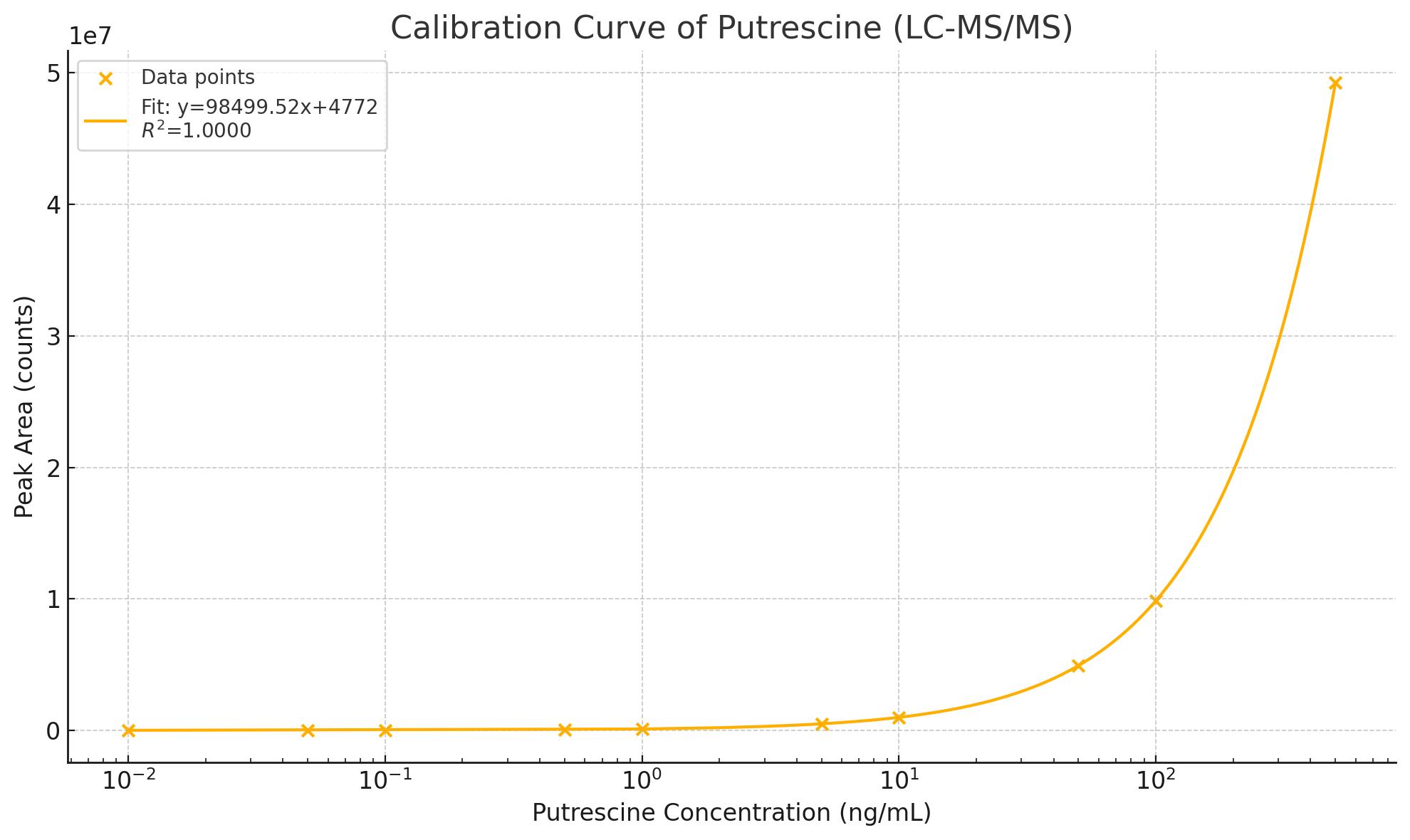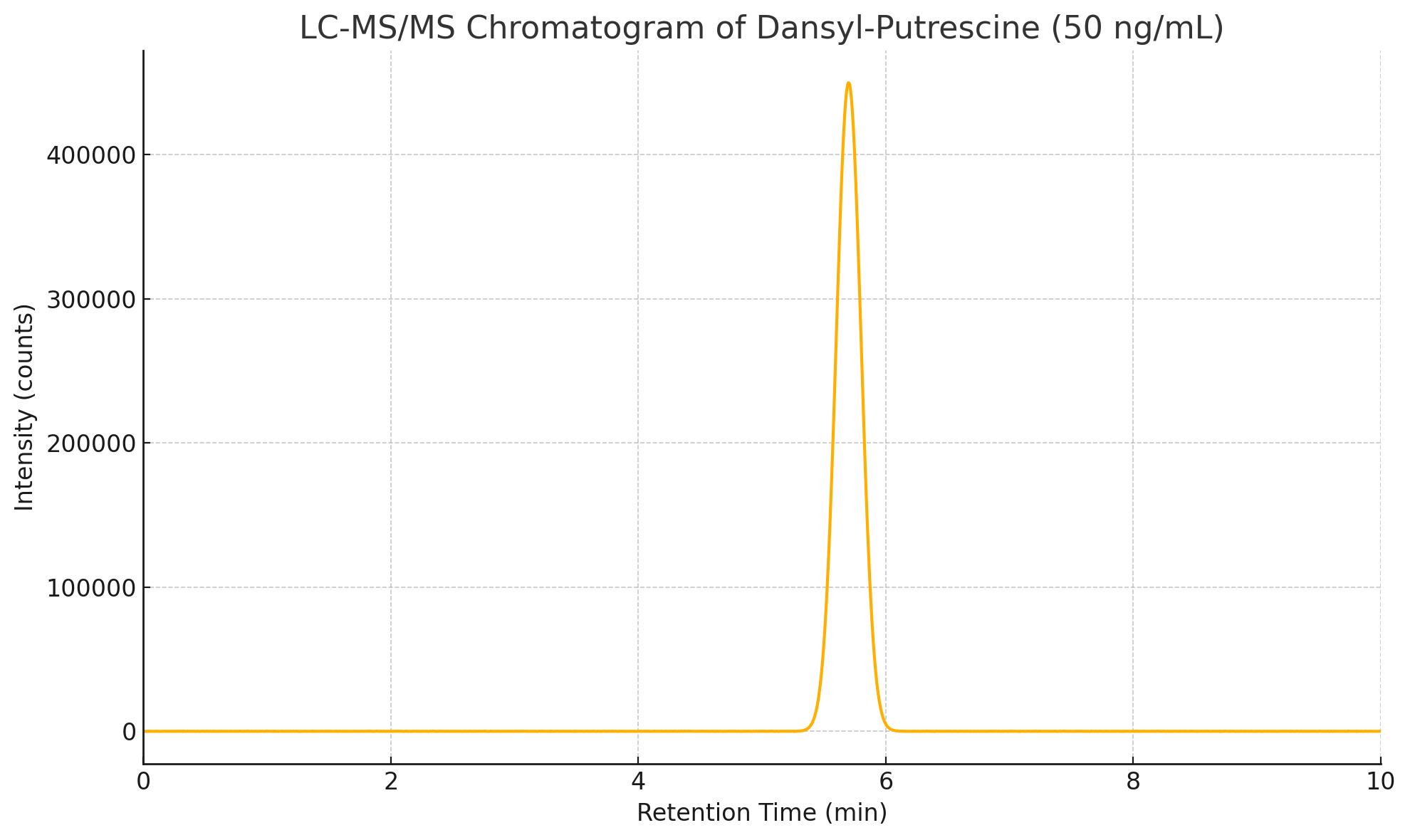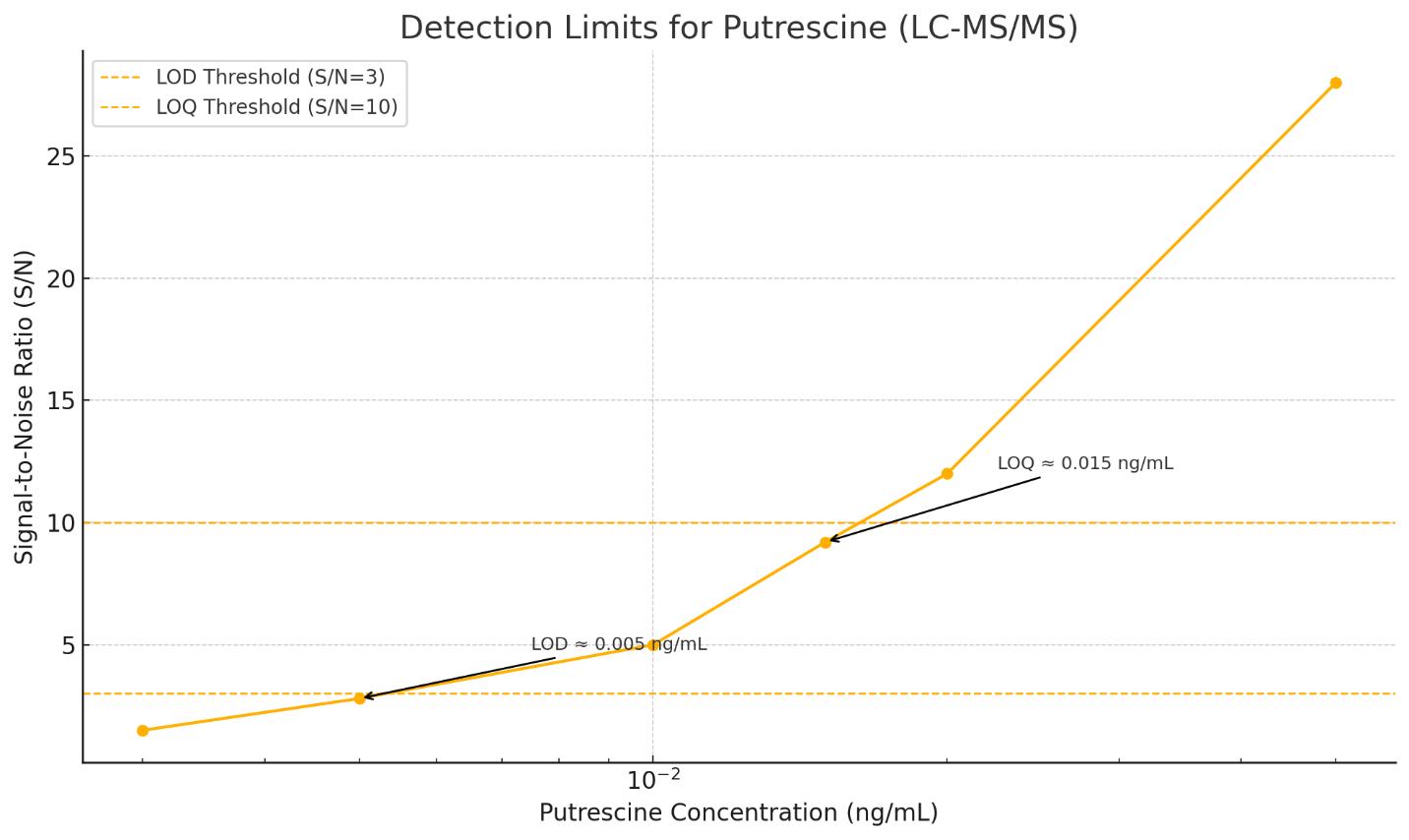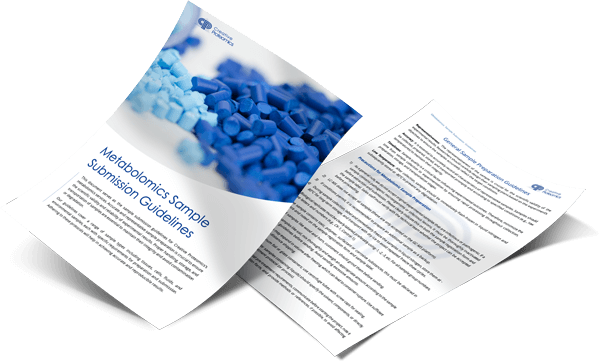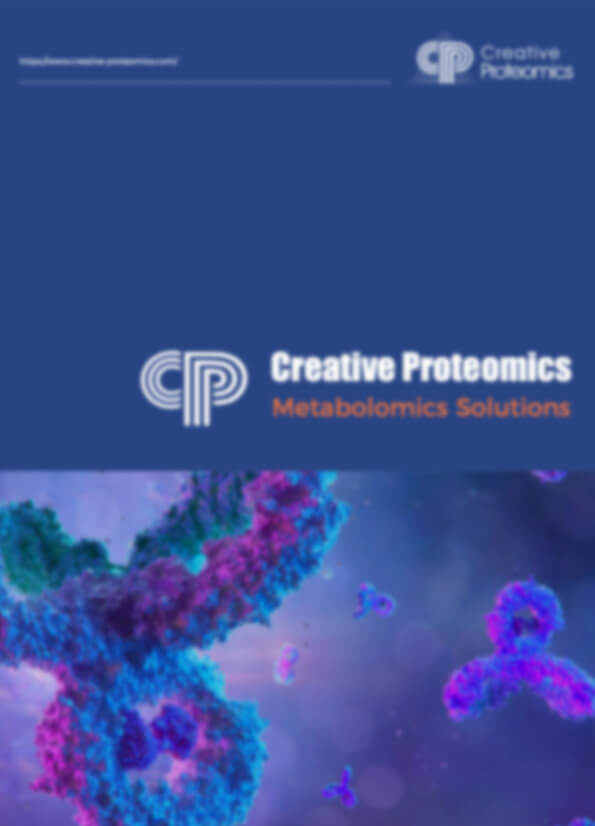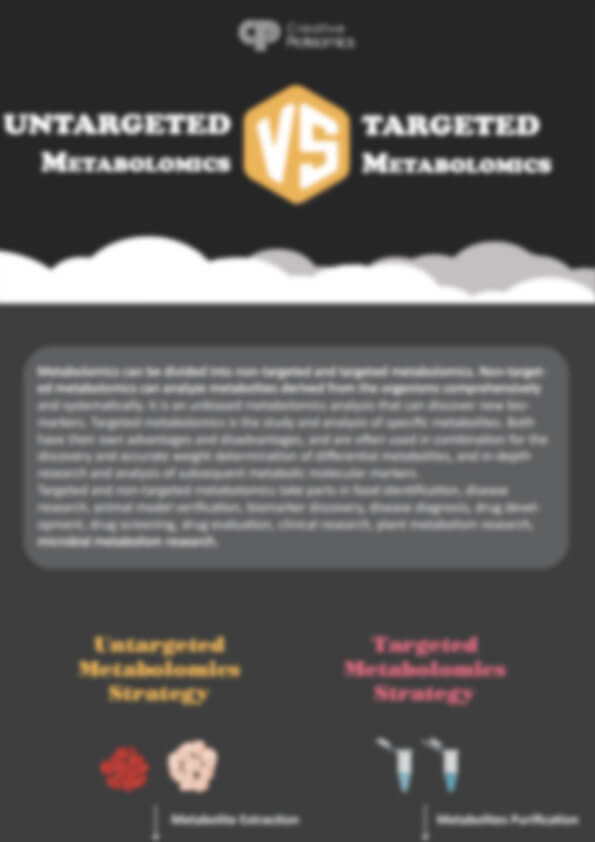Putrescine Analysis Service
At Creative Proteomics, we help you look deeper than just measuring putrescine levels. Our service is built to reveal the hidden stories in your samples—whether you're exploring metabolism, product safety, or microbial pathways.
- Ultra-Low Detection Limits
Confidently detect putrescine down to 0.01 ng/mL in complex matrices. - Complete Polyamine Profiles
Measure putrescine, spermidine, spermine, and critical intermediates in one run. - Pathway-Level Insights
Understand how metabolites connect and interact across biological systems. - Isotope Tracing for Clarity
Track metabolic flows and confirm pathways with stable isotope labeling.
Whether your work is in microbiome research, food safety, bioprocessing, or disease studies, we deliver the clarity you need to move forward with confidence.
Submit Your Request Now
×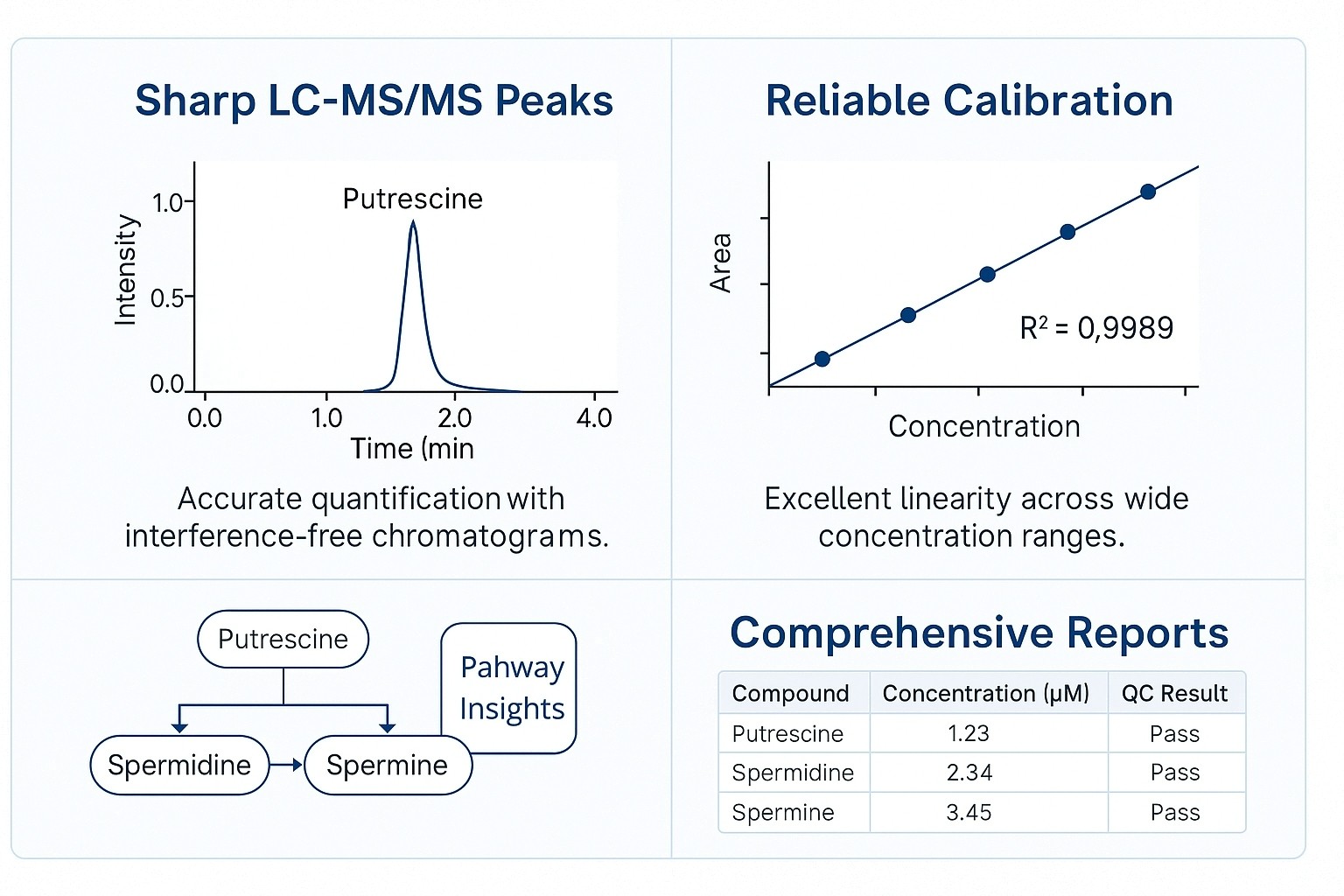
- What We Provide
- Advantages
- Technology Platform
- Sample Requirement
- Demo
- Case
- FAQ
What is Putrescine?
Putrescine, chemically known as 1,4-diaminobutane, is a fundamental polyamine intricately involved in cellular processes such as cell proliferation, stress response, and metabolic regulation. Originating from the decarboxylation of ornithine, putrescine acts as a precursor to higher polyamines, including spermidine and spermine, influencing molecular interactions with DNA, RNA, and proteins. It is also associated with metabolic networks spanning amino acid catabolism, nitrogen cycling, and signaling pathways across biological kingdoms—from plants to bacteria to mammals.
Why Analyze Putrescine?

Understand Cellular Growth and Proliferation
Putrescine is a key regulator of cell cycle progression and growth. Monitoring its levels helps researchers track cellular proliferation and assess the impact of experimental conditions on growth.

Investigate Metabolic Pathways
As a precursor to spermidine and spermine, putrescine is central to polyamine metabolism. Analyzing putrescine provides insight into metabolic shifts and pathway dysregulation in various biological contexts.

Study Cellular Stress and Damage
Putrescine levels fluctuate under oxidative stress or DNA damage, making it a valuable marker for investigating stress response mechanisms and cellular resilience.

Explore Disease Mechanisms
Altered putrescine metabolism is linked to a variety of conditions, including cancer and neurodegenerative diseases. Analysis can reveal metabolic imbalances that play a role in disease progression.
Putrescine Analysis Service Offered by Creative Proteomics
Putrescine Quantification in Biological Samples
- Accurate Measurement: Reliable quantification of putrescine levels in various biological samples, such as tissues, cells, and body fluids.
- High-Resolution Techniques: Use of advanced techniques like LC-MS/MS and HPLC to achieve precision in measurement, ensuring reproducibility and consistency.
Polyamine Profiling: Putrescine, Spermidine, and Spermine
- Comprehensive Profiling: Simultaneous detection of putrescine, spermidine, and spermine to provide a full overview of polyamine metabolism.
- Metabolic Pathway Insights: Identify shifts in polyamine levels, helping to understand metabolic pathways involved in cell growth, differentiation, and stress responses.
Metabolic Pathway Analysis
- Pathway Mapping: Investigate the polyamine biosynthesis pathway and related metabolic pathways to understand the molecular basis of cellular functions.
- Enzyme Activity Analysis: Study the activity of key enzymes involved in the synthesis and degradation of polyamines, providing valuable insights into metabolic regulation.
Cellular Stress and Growth Analysis
- Cell Cycle Progression: Measure putrescine levels in various cell lines to assess how it correlates with cell cycle phases, proliferation, and differentiation.
- Stress Response Monitoring: Analyze how changes in putrescine levels reflect cellular responses to environmental stressors like oxidative stress, nutrient deprivation, or toxic exposure.
Isotope Labeling and Turnover Studies
- Stable Isotope Labeling: Use of isotope-labeled precursors to track putrescine synthesis and turnover in cells, tissues, or organisms, providing detailed insights into metabolic fluxes.
- Quantitative Tracking: Determine the dynamics of putrescine incorporation into cellular systems, aiding in the understanding of metabolic pathways in real-time.
Detected Metabolites & Pathways — Putrescine and Beyond
| Detected Compound | Related Pathway/Function |
|---|---|
| Ornithine | Precursor of putrescine via ornithine decarboxylase |
| Arginine | Source of ornithine via arginase, part of urea cycle |
| Citrulline | Intermediate in urea cycle, linked to arginine metabolism |
| Spermidine | Downstream polyamine derived from putrescine |
| Spermine | Further polyamine synthesized from spermidine |
| N-Acetylspermidine | Polyamine catabolic intermediate |
| N-Acetylspermine | Polyamine catabolic intermediate |
| Agmatine | Alternative polyamine precursor from arginine decarboxylation |
| Cadaverine | Biogenic amine often co-occurring with putrescine |
| γ-Aminobutyric acid (GABA) | Related to polyamine catabolism and stress responses |
| N-Acetylputrescine | Polyamine catabolic intermediate |
| Carboxyspermidine | Intermediate in bacterial polyamine biosynthesis |
| Methionine | Donor of aminopropyl groups in spermidine and spermine synthesis |
| S-Adenosylmethionine (SAM) | Methyl group donor and aminopropyl donor in polyamine synthesis |
| S-Adenosylmethioninamine (dcSAM) | Direct donor of aminopropyl group for polyamine synthesis |
| Proline | Connected to ornithine metabolism via ornithine aminotransferase |
| Lysine | Biogenic amine metabolism, related to cadaverine formation |
| Betaine | Osmoprotection, sometimes analyzed alongside polyamines |
| Histamine | Often measured together with biogenic amines for food safety |
| Tyramine | Biogenic amine relevant in food quality control |
Advantages of Putrescine Assay
- Low Limits of Detection: As low as 0.01 ng/mL for putrescine in complex biological matrices.
- Excellent Linearity: Correlation coefficients (R² > 0.999) across calibration ranges.
- Wide Dynamic Range: Spanning 3–5 orders of magnitude, accommodating diverse sample concentrations.
- Matrix Versatility: Validated for food, biofluids, cell culture, plant extracts, and fermentation media.
- Batch Consistency: Coefficient of variation (CV) typically<5%, ensuring reproducibility across large sample sets.
Methods and Instrumentation for Putrescine Analysis
Agilent 6495C Triple Quadrupole LC-MS/MS
- Ultra-trace detection down to femtogram levels
- Ideal for targeted quantification in complex biological matrices
Agilent 7890B-5977A GC-MS
- Excellent for volatile derivatives after derivatization
- Widely used in food safety and biogenic amine analysis
Agilent 1260 Infinity II HPLC
- High-resolution separation for polyamines with derivatization
- Cost-effective option for routine screening
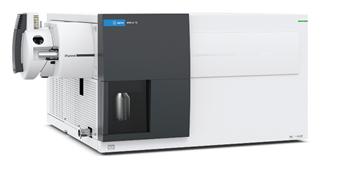
Agilent 6495C Triple Quadrupole (Figure from Agilent)
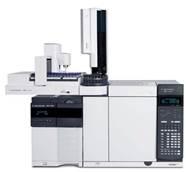
Agilent 7890B-5977A (Figure from Agilent)
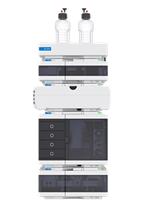
Agilent 1260 Infinity II HPLC (Fig from Agilent)
Our Putrescine Assay Workflow
1. Project Consultation
We begin with a detailed consultation to define your analytical goals, target matrices, and any regulatory requirements, ensuring the assay design aligns precisely with your project objectives.
2. Sample Preparation & Derivatization
Samples undergo optimized extraction tailored to your matrix. For enhanced detection, derivatization—typically with dansyl chloride for LC-MS/MS or benzoyl chloride for GC-MS—is performed to improve sensitivity and chromatographic behavior.
3. Instrumental Analysis
Analyses are performed on advanced LC-MS/MS or HPLC systems, incorporating internal standards in all runs to correct for variability and ensure high data accuracy.
4. Data Processing & Quantification
Data processing involves MRM integration and isotope-dilution correction, with quantification based on matrix-matched calibration curves for maximum precision.
5. Reporting & Interpretation
Clients receive comprehensive reports detailing concentration tables, QC results, and optional pathway-level insights, ensuring results are both accurate and meaningful for research or production needs.
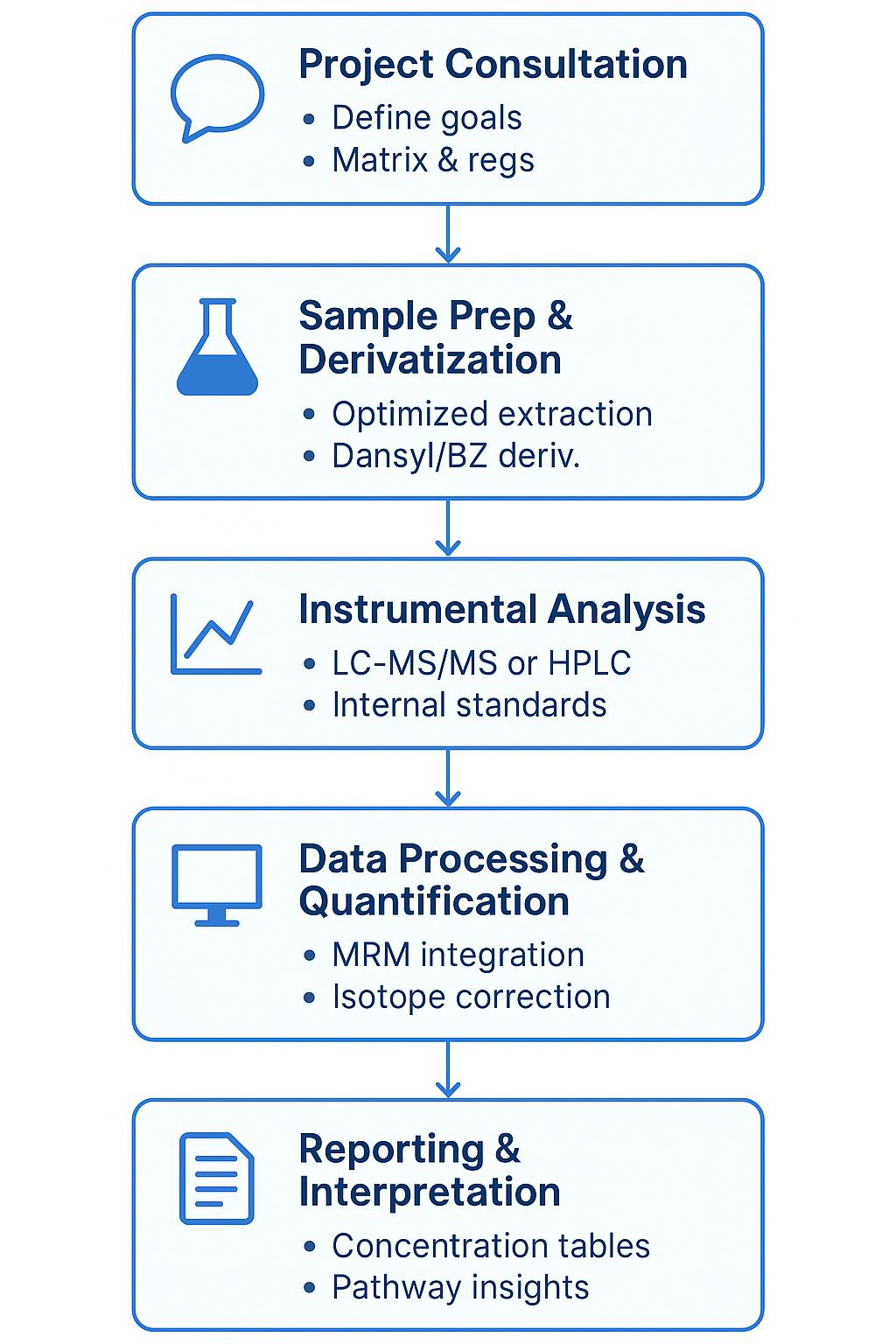
Sample Requirements for Putrescine Analysis Service
| Sample Type | Minimum Volume / Weight | Container Type | Storage Conditions |
|---|---|---|---|
| Serum / Plasma / Urine | ≥ 200 μL | Cryovial | -80°C |
| Food Samples (solid) | ≥ 1 g | Sterile tube | -20°C |
| Plant Tissues | ≥ 100 mg | Sterile tube | -80°C |
| Fermentation Broth | ≥ 2 mL | Sterile tube | -20°C |
| Cell Pellets | ≥ 1 x 10⁶ cells | Cryovial | -80°C |
| Culture Media | ≥ 1 mL | Sterile tube | -20°C |
Demo Results
Putrescine Analysis Service Case Study
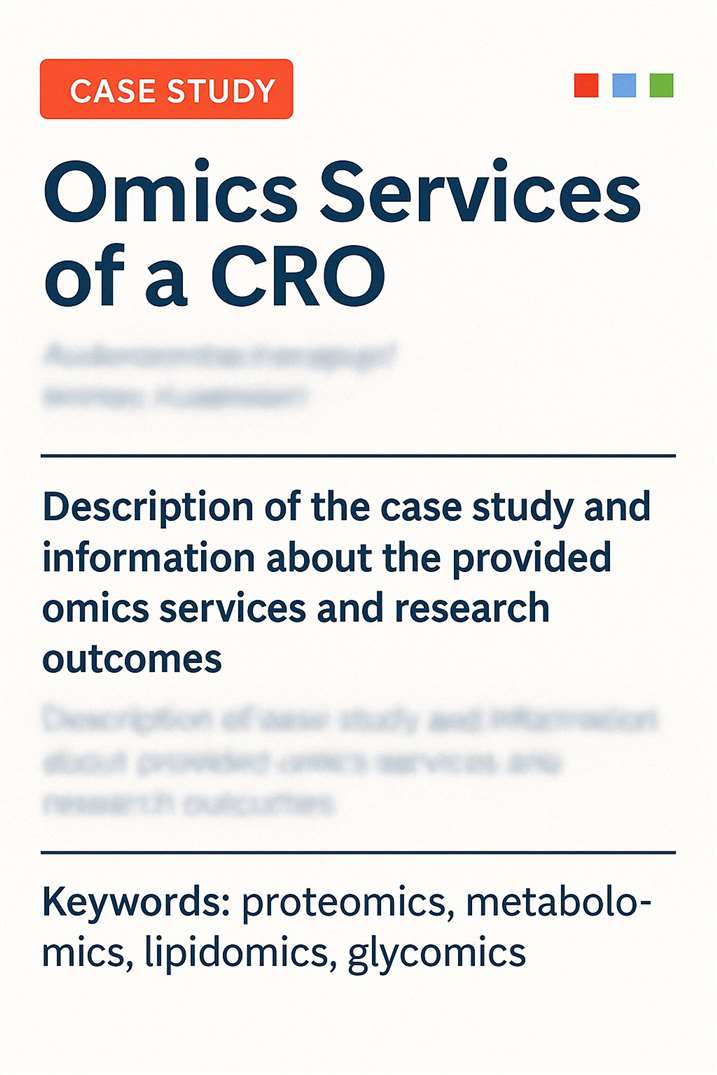
Title: Unraveling Putrescine Production Pathways in the Gut Microbiome
Journal: Gut Microbes
Published: 2019
- Study Summary
- Background
- Methods
- Results
- Reference
This study explored how the intestinal microbiome collectively produces putrescine, a polyamine essential for cell growth and host health. By applying isotope labelling and advanced analytical techniques, the researchers mapped multiple microbial pathways contributing to putrescine synthesis.
Polyamines like putrescine play crucial roles in cellular proliferation, inflammation regulation, and gut barrier integrity. While dietary intake contributes to polyamine levels, significant amounts are synthesized by gut bacteria. However, the specific biosynthetic routes and interspecies cooperation involved in microbial putrescine production remained unclear.
- Rats were administered 13C₆, 15N₄-labelled arginine via a colonic catheter.
- Faecal cultures were incubated with labelled arginine under anaerobic conditions.
- Analytical techniques included GC-MS and CE-TOF MS for quantifying putrescine, intermediates, and isotopic enrichment.
- Pathway mapping was performed based on metabolite profiles and isotope incorporation.
![]() How Creative Proteomics Can Help?
How Creative Proteomics Can Help?
- Absolute quantification of putrescine and related polyamines
- Stable isotope tracing to map metabolic pathways
- High-sensitivity detection in diverse matrices, from faecal cultures to animal tissues
- Pathway-level data interpretation for actionable insights
- Putrescine was synthesized via multiple pathways, notably through ornithine and agmatine intermediates.
- No single bacterial species completed the biosynthesis independently; instead, extracellular intermediates were shared among microbes, demonstrating a collective metabolic process.
- Isotope-labelled putrescine accounted for up to 72.9% of total putrescine in faecal cultures, confirming conversion from arginine.
- In vivo analysis detected labelled putrescine in rat colonic contents, verifying physiological relevance.
- Advanced techniques enabled precise differentiation of metabolic routes and revealed both forward and reverse biosynthetic pathways.
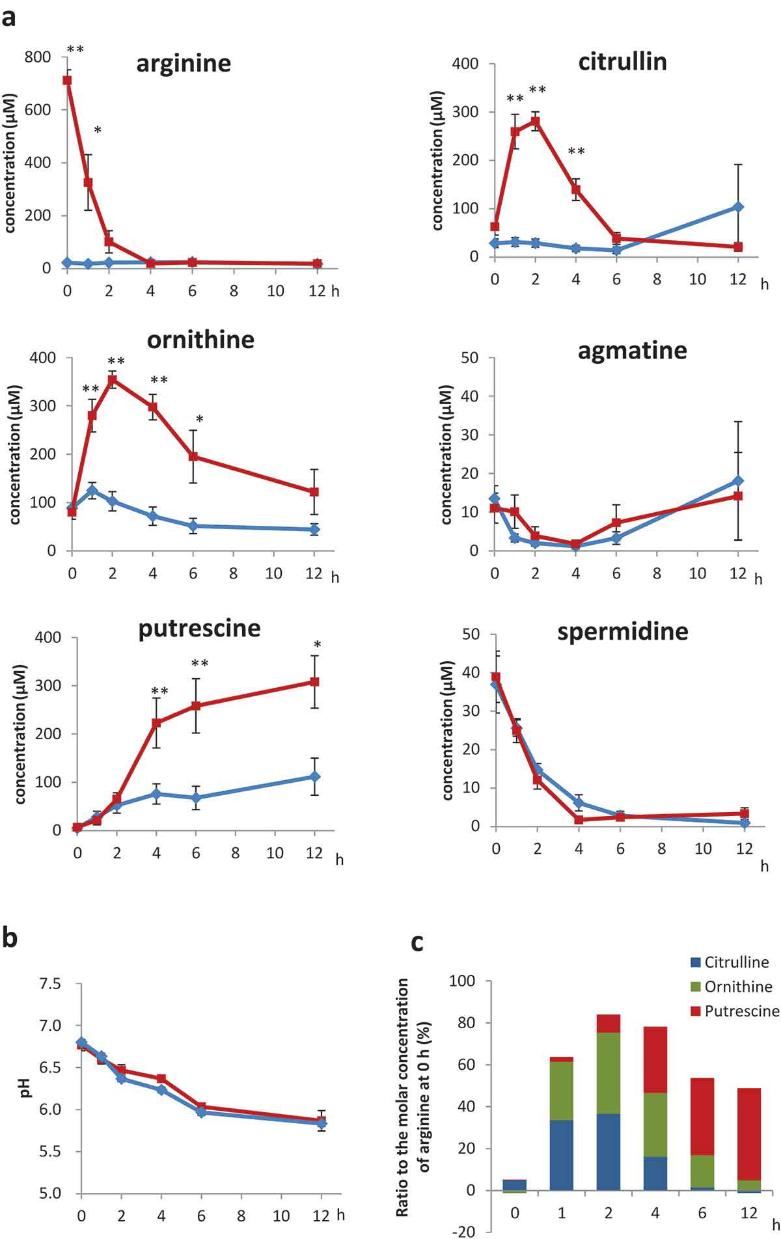 Time-course of putrescine levels and isotope enrichment in faecal cultures supplemented with labelled arginine, measured by GC-MS.
Time-course of putrescine levels and isotope enrichment in faecal cultures supplemented with labelled arginine, measured by GC-MS.
Reference
- Nakamura, Atsuo, Takushi Ooga, and Mitsuharu Matsumoto. "Intestinal luminal putrescine is produced by collective biosynthetic pathways of the commensal microbiome." Gut Microbes 10.2 (2019): 159-171. https://doi.org/10.1080/19490976.2018.1494466
FAQ of Putrescine Analysis Service
Can you quantify other polyamines in the same run?
Yes. Our LC-MS/MS MRM panel simultaneously measures putrescine, spermidine, spermine, cadaverine, agmatine, and key acetylated intermediates without additional sample prep.
What concentration range is validated?
The method is linear from 0.01 ng mL⁻¹ to 500 ng mL⁻¹ (R² ≥ 0.999). Samples outside this window are handled by automatic dilution or pre-concentration as needed.
Which internal standards are used?
We employ isotopically labeled 13C4, 15N2-putrescine or D₈-putrescine to correct for matrix effects, ion suppression, and injection variability.
How stable is putrescine during storage?
Stability studies show ≤ 5 % loss after 30 days at –80 °C with a single freeze–thaw. For room-temperature shipment (> 24 h), adding 0.1 % formic acid suppresses microbial decarboxylation.
Do clients need to derivatize samples before shipping?
No. All derivatization is performed in-house (dansyl chloride for LC-MS/MS; benzoyl chloride for GC-MS) under controlled conditions to ensure uniform reaction efficiency.
What quality-control elements are included?
Each batch contains system-suitability standards, procedural blanks, duplicate QC pools, and spike-recovery checks at three levels; acceptance criteria follow FDA bioanalytical guidelines (CV ≤ 15 %).
Can you report absolute concentrations in tissue homogenates?
Yes. Homogenates are extracted with perchloric acid, spiked with isotope standards, and normalized to wet weight or protein content, yielding values in µg g⁻¹ tissue or nmol mg⁻¹ protein.
Is method development available for non-standard matrices (e.g., fermentation foam condensate)?
Absolutely. We customize extraction solvents, pH, and cleanup (SPE or MEPS) for novel matrices and apply matrix-matched calibration to maintain accuracy.
Can the data feed directly into metabolomics workflows?
Deliverables include raw files, peak lists, and annotated mzML files compatible with MetaboAnalyst, Skyline, and most LIMS platforms to facilitate downstream pathway analysis.
Learn about other Q&A about proteomics technology.
Publications
Here are some of the metabolomics-related papers published by our clients:

- Methyl donor supplementation reduces phospho‐Tau, Fyn and demethylated protein phosphatase 2A levels and mitigates learning and motor deficits in a mouse model of tauopathy. 2023. https://doi.org/10.1111/nan.12931
- A human iPSC-derived hepatocyte screen identifies compounds that inhibit production of Apolipoprotein B. 2023. https://doi.org/10.1038/s42003-023-04739-9
- The activity of the aryl hydrocarbon receptor in T cells tunes the gut microenvironment to sustain autoimmunity and neuroinflammation. 2023. https://doi.org/10.1371/journal.pbio.3002000
- Lipid droplet-associated lncRNA LIPTER preserves cardiac lipid metabolism. 2023. https://doi.org/10.1038/s41556-023-01162-4
- Inflammation primes the kidney for recovery by activating AZIN1 A-to-I editing. 2023. https://doi.org/10.1101/2023.11.09.566426
- Anti-inflammatory activity of black soldier fly oil associated with modulation of TLR signaling: A metabolomic approach. 2023. https://doi.org/10.3390/ijms241310634
- Plant Growth Promotion, Phytohormone Production and Genomics of the Rhizosphere-Associated Microalga, Micractinium rhizosphaerae sp. 2023. https://doi.org/10.3390/plants12030651
